Hot vs hot air: which wellness trends are actually taking off in L.A.?
If there is a testing ground for wellness trends, it’s in L.A.
But in the la-la-land of smokes and mirrors, it can be hard to know which of these trends are actually trending, and which ones are just fads.
So we did 2 things. First, we leafed through the press, noted down some "2019 wellness trends" and checked which ones people were actually talking about online.
Our finding? Only 4 of 10 trends heralded by the lifestyle press had any substantial conversation around them, and only 1 of them was truly heating up.
Second, we mapped that audience to try and understand its composition, and how it affects how wellness trends spread.
We found that many communities in the wellness community are indeed L.A.-based, small but tightly connected. While high connectedness is one of the ingredients necessary for potential virality, we found that trends among this group tend to not make the jump to bigger audiences without the endorsement of a publication or a celebrity.
Let's dive in.
Wellness trends: Hot vs Hot air
Towards the end of each year, lifestyle publications (we looked at Glamour, Goop, and a few others) tend to share lists of the new wellness trends coming up in for the year ahead. We looked at several of these lists and narrowed down some of the trend predictions to the following 10:
- Edible insects
- Healing clays
- Energy healing
- Celery juice
- Postural alignment therapy
- Thermage and ultherapy (2 new anti-aging treatments)
- ‘Enhanced’ vitamin sweets and chocolate
- Anxiety coaching
- Bünda classes (a workout that promises a better butt)
- Meditation studios
- Magic mushrooms and other psychedelics
Running each of them through Pulsar TRENDS, we were able to see how often each trend was mentioned in the last six months on Twitter in the United States, and whether the trend is heating up (gathering more mentions over time) or cooling off (mentions per hour/day are decreasing).
We then mapped the audience around those trends and learned that the audiences for wellness are quite cohesive and will spread something if they believe in it, and that overly specific fads are unlikely to take off (skip further down in the post to read that analysis).
Trends (truly) heating up
#1 – Celery juice
With 5k mentions over the past six months, this is a growing trend with a clear upward trajectory.
Good Morning America seeded this trend by running a segment on celery juice back in August, with Goop, Vogue and even the Atlantic following up later in 2018. An endorsement on January 10th from Kim Kardashian on her Instagram Stories –as a possible treatment for her psoriasis condition– and the ensuing conversation around it also helped to boost the mentions.
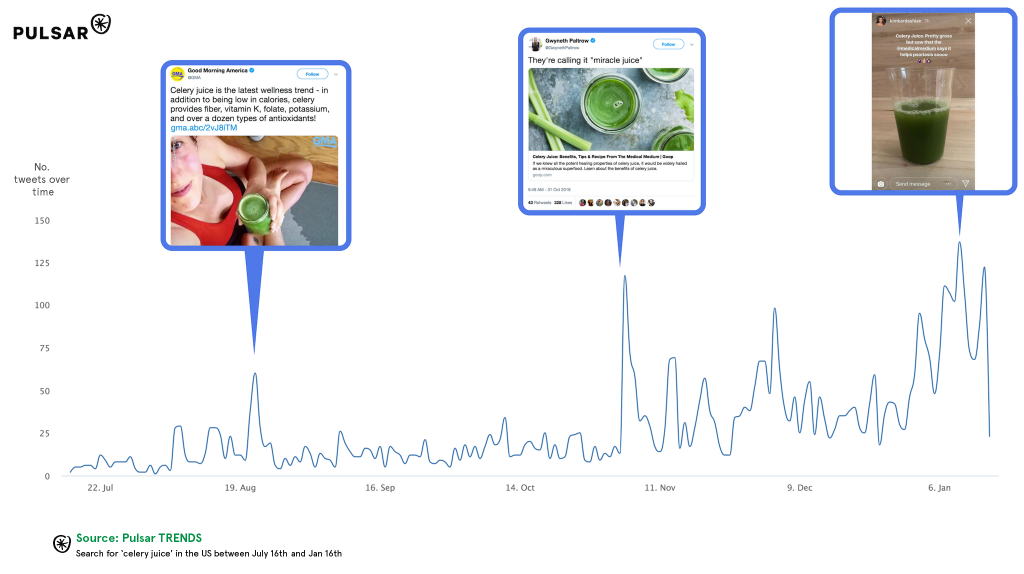
Talk about celery juice is nowhere nearly as large on Twitter as it is on Instagram, where #celeryjuice has reached nearly 70,000 mentions.
[caption id="attachment_4916" align="alignnone" width="1024"]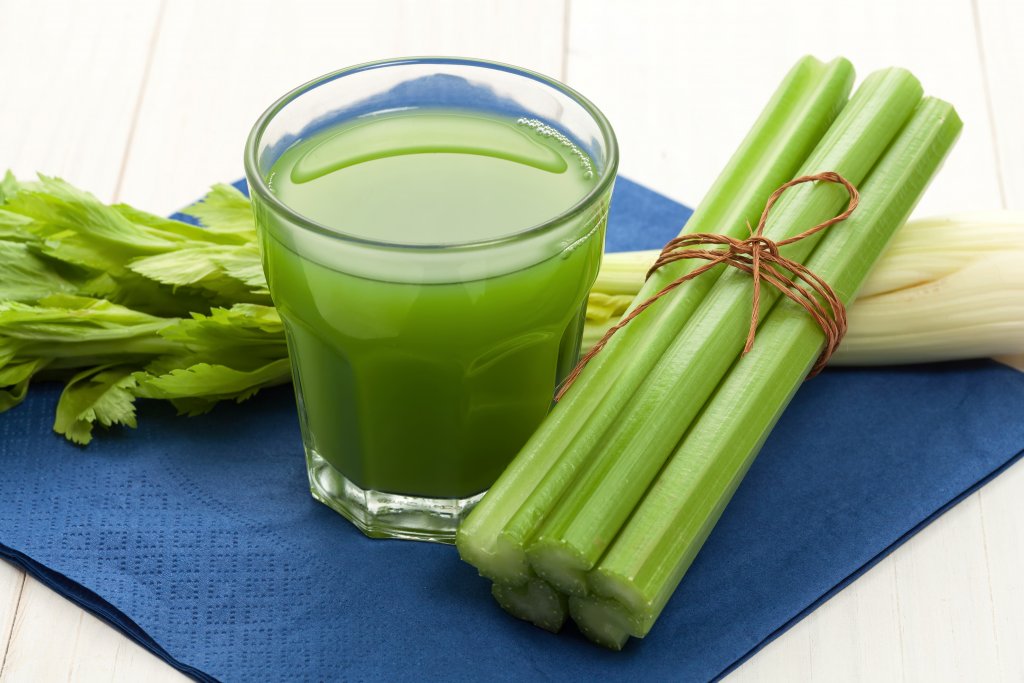 Everybody's drinking it[/caption]
Everybody's drinking it[/caption]
The growth of this trend over the New Year period –when many make wellness-based resolutions–means people are not just talking about it: they are actually searching for it, and –as you are well aware if you live in L.A.– actually trying out celery juice themselves:
https://twitter.com/vminsgalaxy/status/1081053437859524608
Which brings the trend to the meta point - people talking about why people are talking about it:
https://twitter.com/carolineradaj/status/1083843980457140225
#2 – ‘Magic Mushrooms’
Over the past 6 months in the US there were 26k mentions of various types of magic mushrooms (psilocybin, cordyceps) which are making their way into the mainstream as decriminalization is floated in states like Denver and Oregon, and companies making ‘legit’ versions get funding.
The mentions have a fairly consistent baseline of around 100 people talking about them every day, with spikes flaring up with news stories such as FDA grants for research into psilocybin as a cure for depression. But the mentions are not growing substantially - they might need a bigger boost from a Kim, a Goop, or a Good Morning America.
#3 – Clays
Various healing clays have racked up about 11k mentions on US Twitter in the last six months. The clay-mask selfie is also very popular on Instagram, with 42,000 mentions for #aztecclaymask, 27,000 for #mintclaymask, and 9,500 on #pinkclaymask.
The graph here is spiky and reactive - clay masks are not new as a concept, but ingredients for them are ever-evolving - so conversation varies up and down as people recommend new ingredients, such as turmeric or bentonite, often based on new research on their benefits.
https://twitter.com/Jen_ny83/status/1081332963902701570
#4 – Energy healing
Another substantial trend among our list was energy healing, which got 8k mentions in the last six months.
This again is not a new topic, but it is picking up interest from a community interested in more transcendent topics, like astrology.
Wellness 'trends' that are decidedly hot air
Many other topics which had been flagged as trends aren’t garnering many mentions on social media. Click on each one of them to look at the TRENDS graph for the past 6 months:
- Postural alignment therapy
- Anxiety coaches
- Thermage and ultherapy
- Enhanced sweets
- Insects
- Meditation studios
- Bunda classes
The majority of these have a very low to non-existent baseline of people talking about them every day.
Many of these topics are very specific and involve adjusting tiny details of people’s lifestyles, which might explain why they are not permeating to social media conversation.
L.A. & the wellness audience
Searching for all of the wellness topics we had seen mentioned in recent press on Pulsar TRAC, we were able to confirm that L.A. is indeed the US hotspot for wellness conversation.
The audience for wellness was primarily female, from Los Angeles, with bio keywords that included ‘love’ ‘life’ ‘writer’ ‘artist’ and ‘tarot’”. So far, so well(ness).
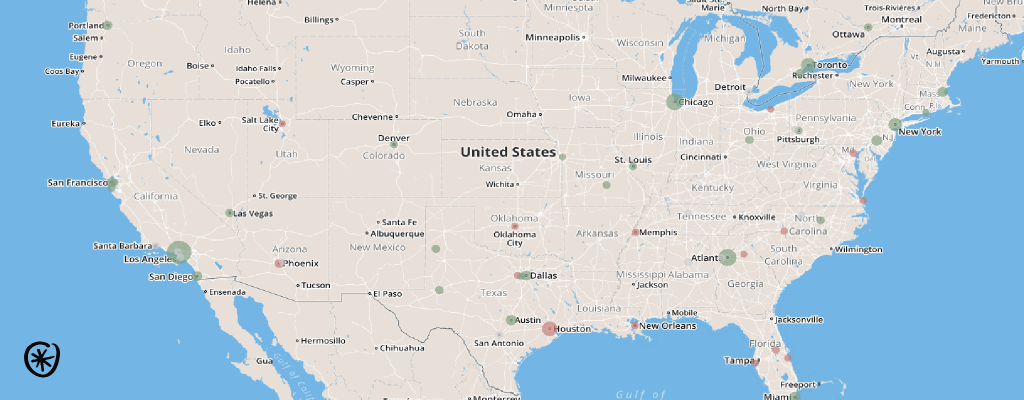
TRAC’s location map detected most conversation in L.A. - representing 6% of the total US audience - followed by Atlanta, New York, Chicago and Austin. But how does it spread?
Using our integration with audience segmentation tool Audiense, we were able to map conversations about these trends to different audience segments, enabling us to see how trends can spread between them, and therefore how conversations about something like celery juice could go viral.
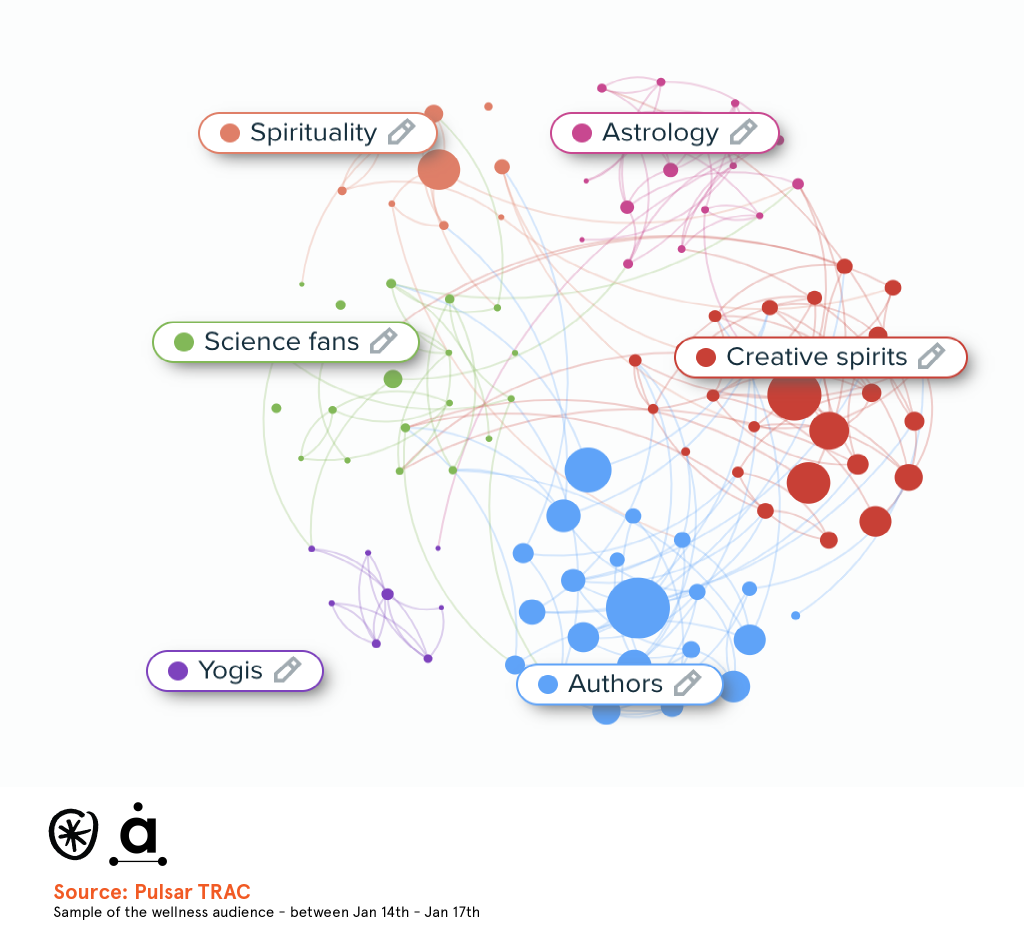
The biggest segment we found, 10% of this total wellness audience, are ‘creative spirits’: actors, musicians, artists, life coaches. 64% of them are aged 25-54, and influencers like health blogger Pamela Sutherland and author Joyce Knudsen inspire this group to spread messages.
This community is strongly connected to the 'author' segment, which makes up 8% of the audience, have similar age ranges, and also label themselves with by their work.
A trend making its way through these two segments has a high chance to spread quickly. But as we saw in the 10 trends analyzed above, it is clear that this audience takes its cues from media and celebrities to pick up fresh trends – which then get spread through the network fairly quickly.
The third biggest segment is the ‘science fans’, who are a lot younger (71% of them in in the 13-24 age range) and members tend to follow publications like New Scientist and Science American. The three remaining segments - making up 13% of the total audience - were the yogis, spirituality gurus and astrology fans. They are all majority L.A.-based (22% yogis, 18% spirituality, 16% astrology). These communities are more evenly spread, with fewer large influencers dictating conversations through the segment.
What about Goop?
One huge influencer on wellness is, of course, Goop, the online lifestyle publication started by Gwyneth Paltrow in 2008 to “nourish the inner life.”
We compared the audience talking about wellness trends to a sample of Goop’s followers, and found that the two are quite different:
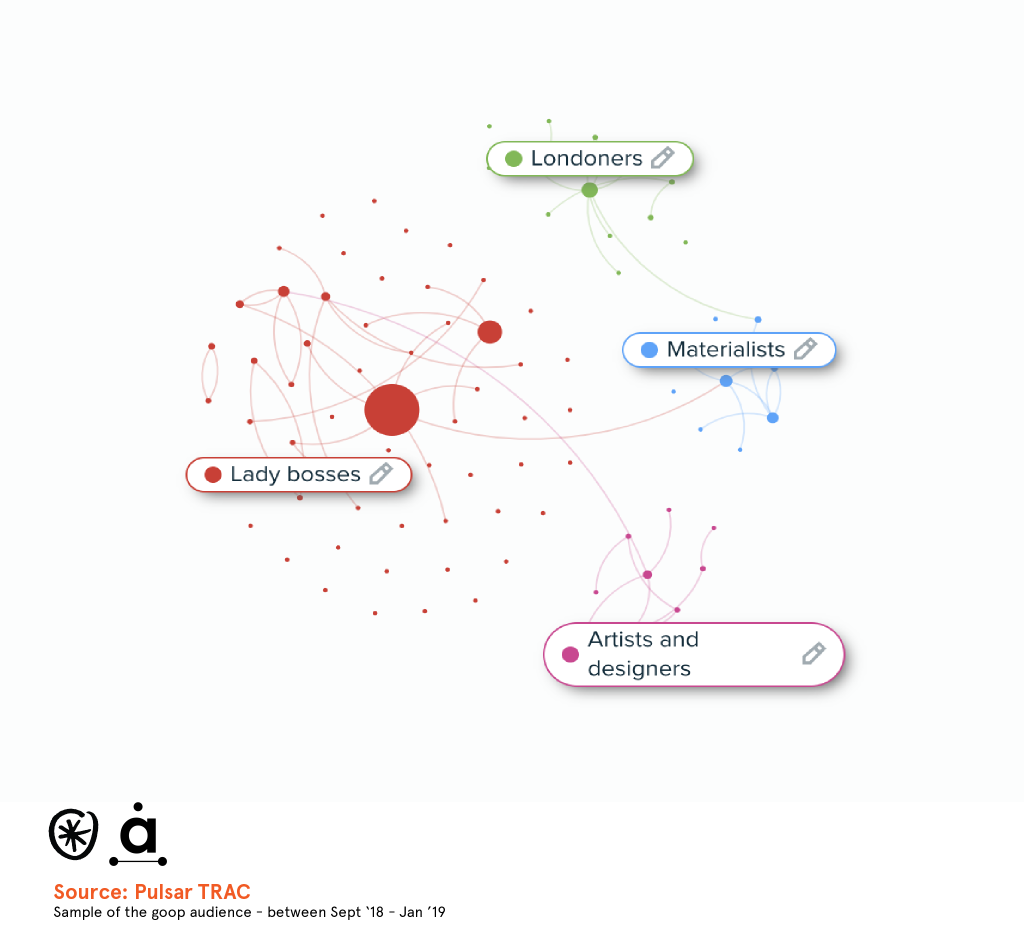
The majority (10%) of Goop fans identify as strong women, or lady bosses, identifying with Goop- and Paltrow- ’s feminist stance. 54% of this group are 18-25, so Goop’s aspirational messaging may be particularly significant to them.
Surprisingly, the largest city for Goop followers is London with 8% of the total audience, followed by New York (6%) and L.A. (5%). The Goop audience is very cohesive, which means a trend will spread fast amongst them, but it is also highly centralized, with the Goop account itself being the main conduit for trends spreading through the audience, as it did for instance, with celery juice.


